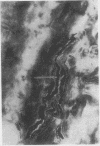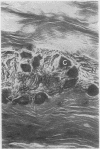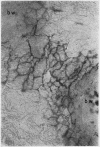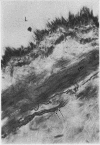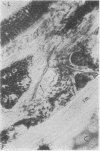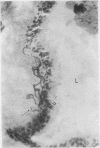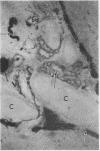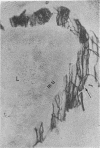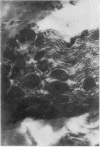Abstract
The rhesus monkey lung was stained both by histological methods and histochemically for specific acetylcholinesterase (AChE). AChE-containing nerves in bundles were demonstrated in connective tissue of the hilum and in association with clusters of ganglion cells. These bundles become associated with the bronchial tree as they enter the lung parenchyma, and their numbers of myelinated fibres diminish as they pass scattered ganglion cells along the bronchial system. Extrachondral and subchondral plexuses of nerves were found to be interconnected and to contribute to the perimuscular varicose nerve plexus of the bronchi and bronchioles. These nerve plexuses were found to extend as far as the respiratory bronchioles. In the bronchial submucosa there are AChE-positive nerve plexuses which arise from three sources: (1) the adventitial plexus in bronchioles, or the subchondral plexus in bronchi, (2) the perimuscular nerve plexus, and (3) AChe-containing nerves associated with the bronchial artery. The submucosal plexus appears to innervate the acinar submucosal glands in bronchi as well as continuing as central nerves in the mucosal folds. In the bronchioles the nerves in the mucosal fold are in close relationship with the mucosa.
Full text
PDF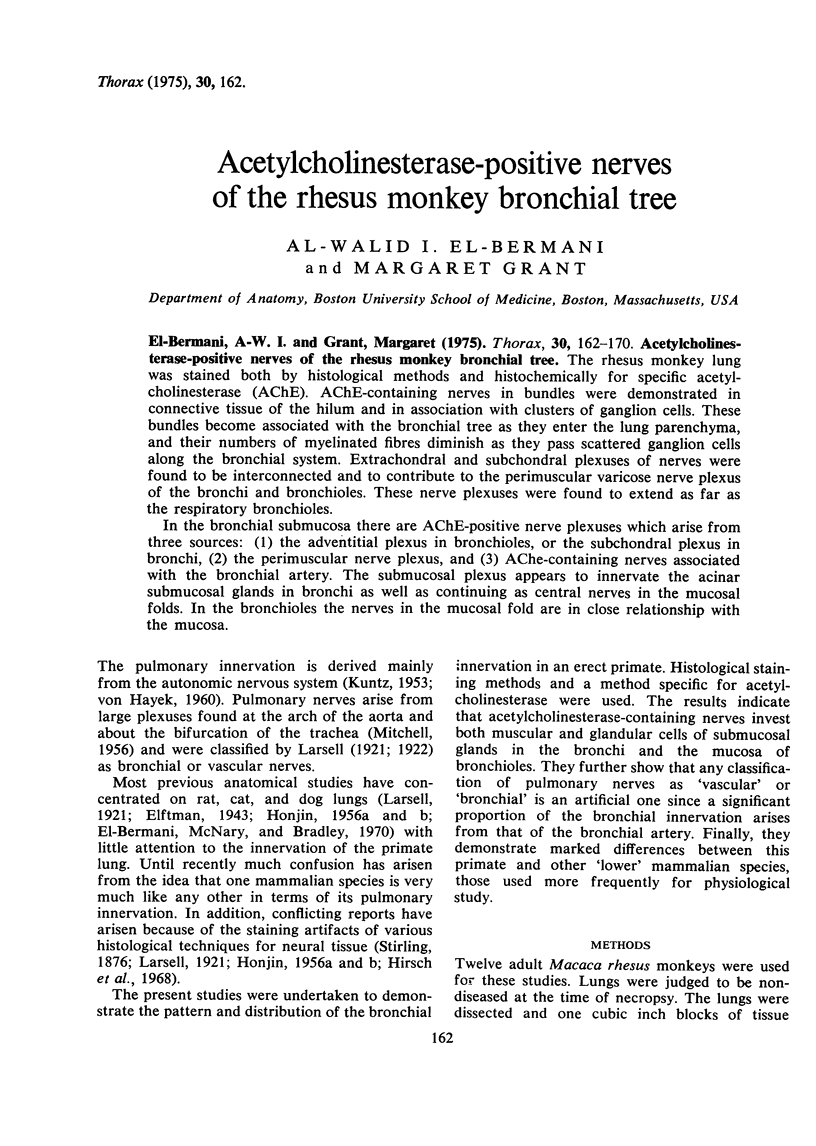
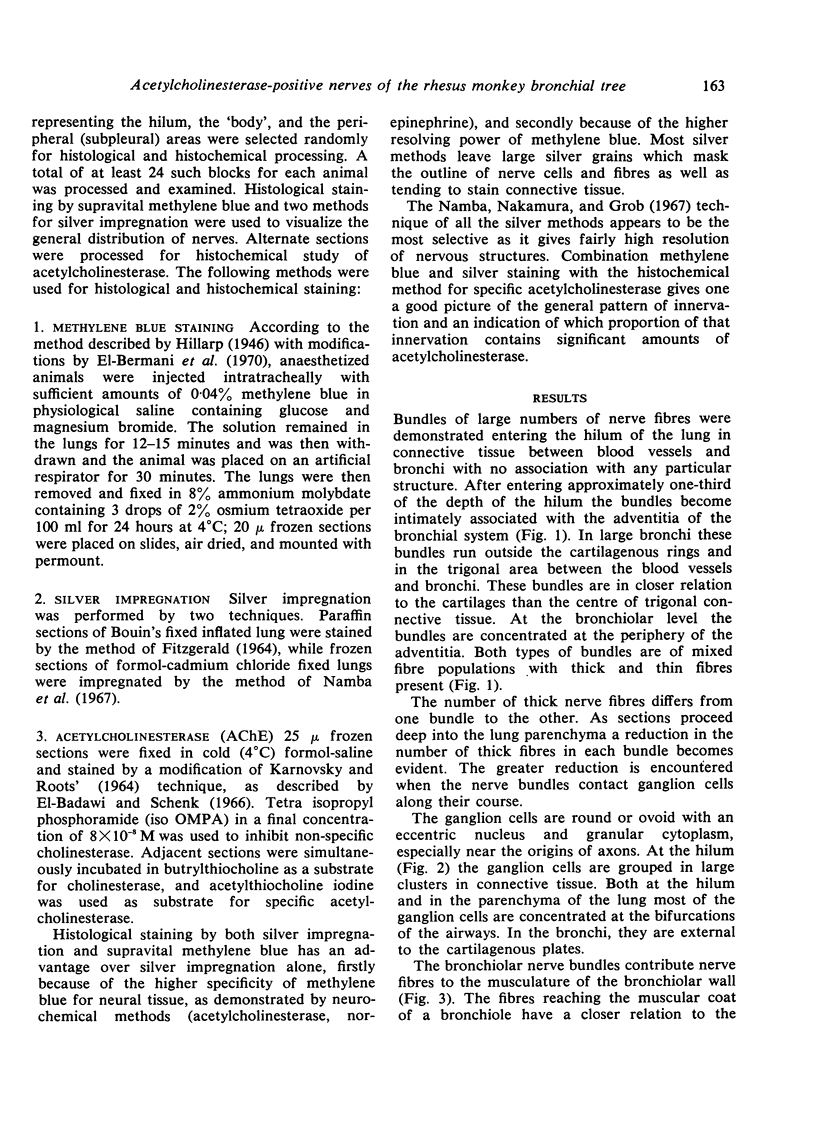
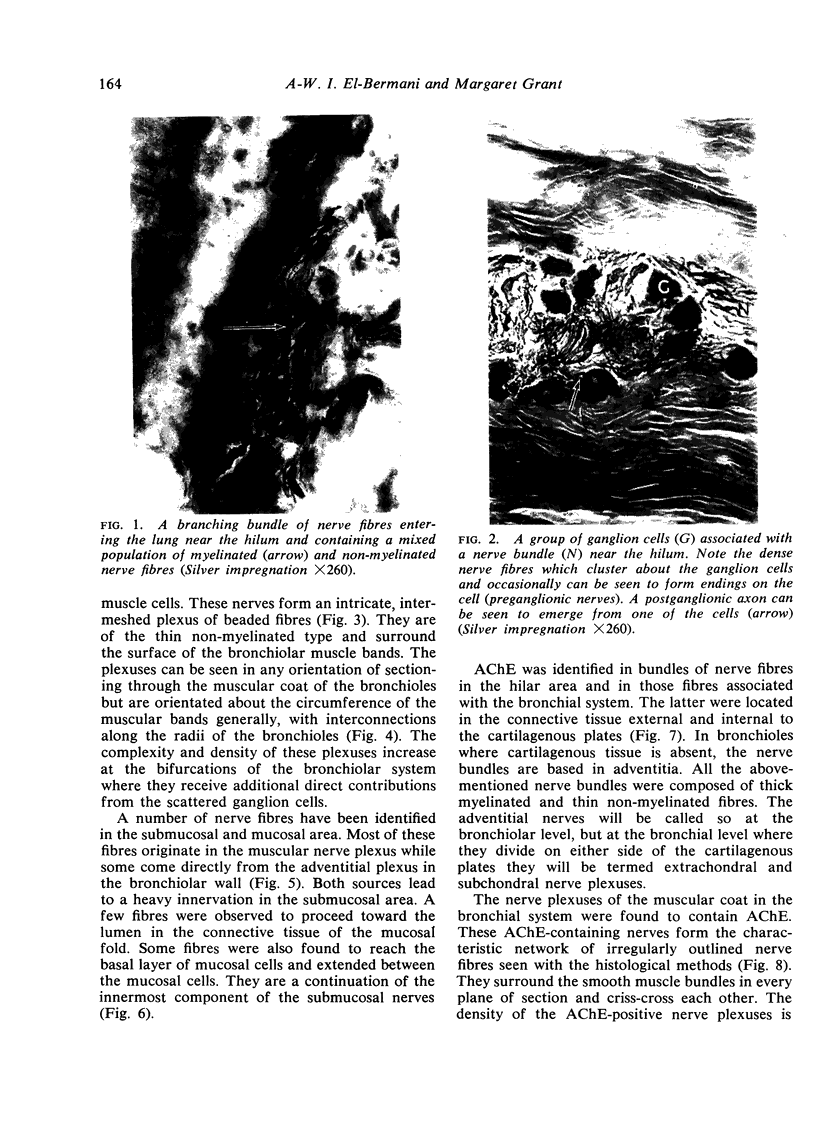
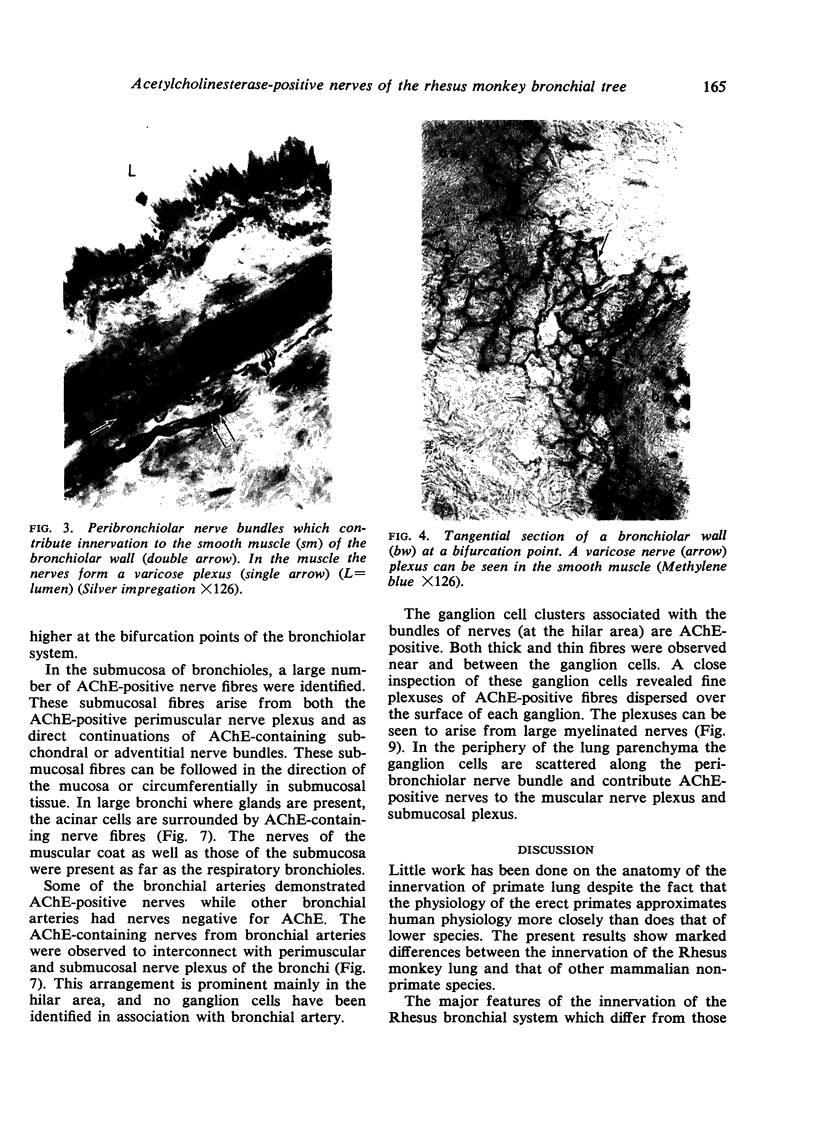
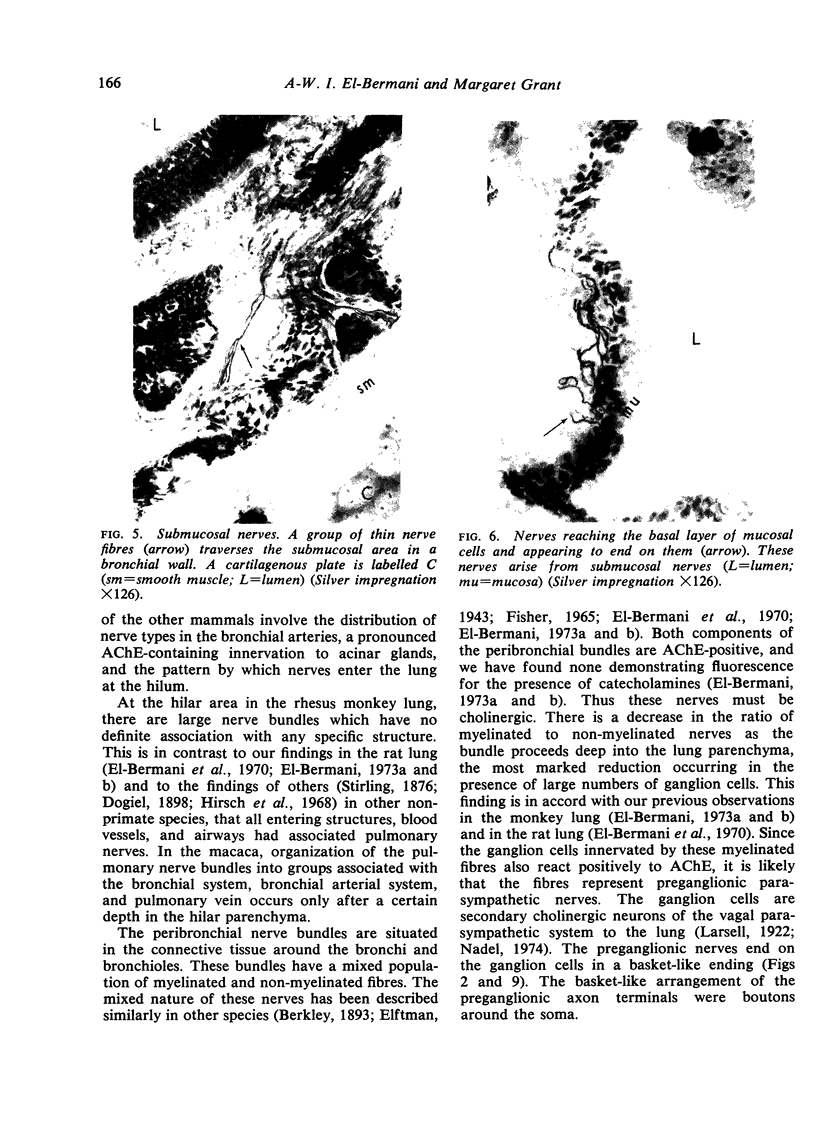
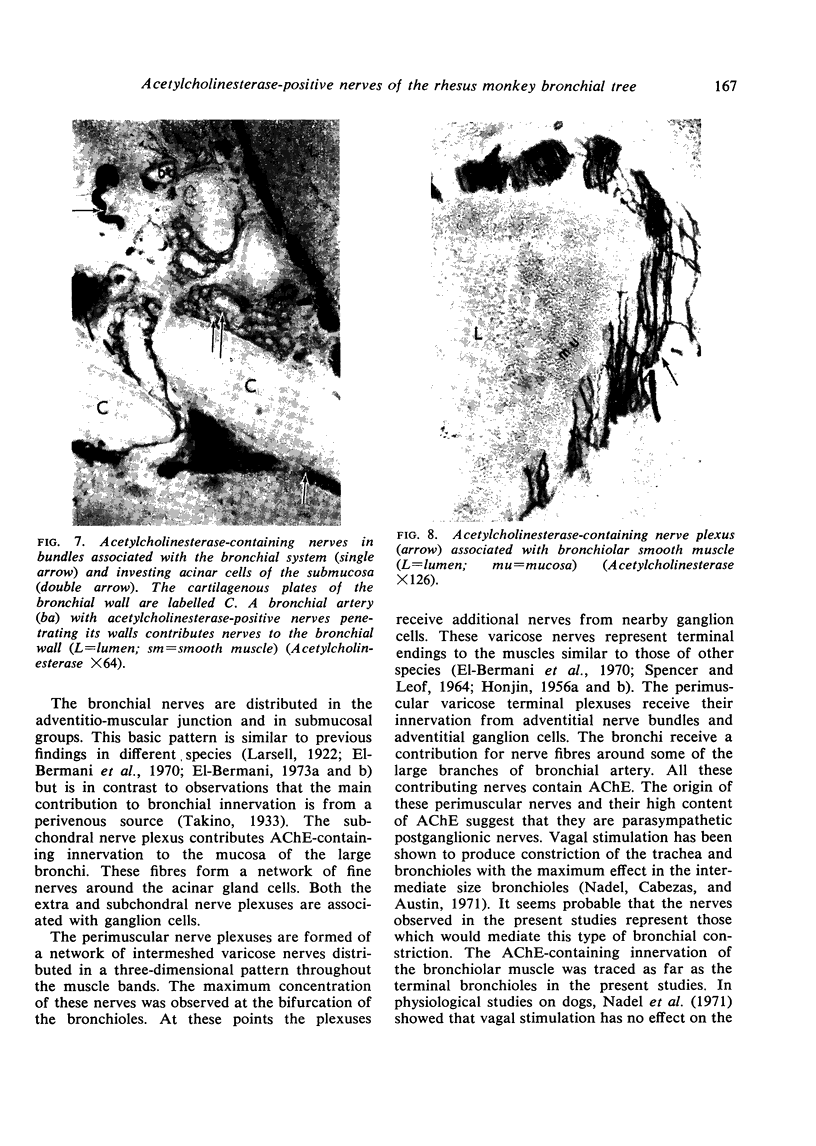
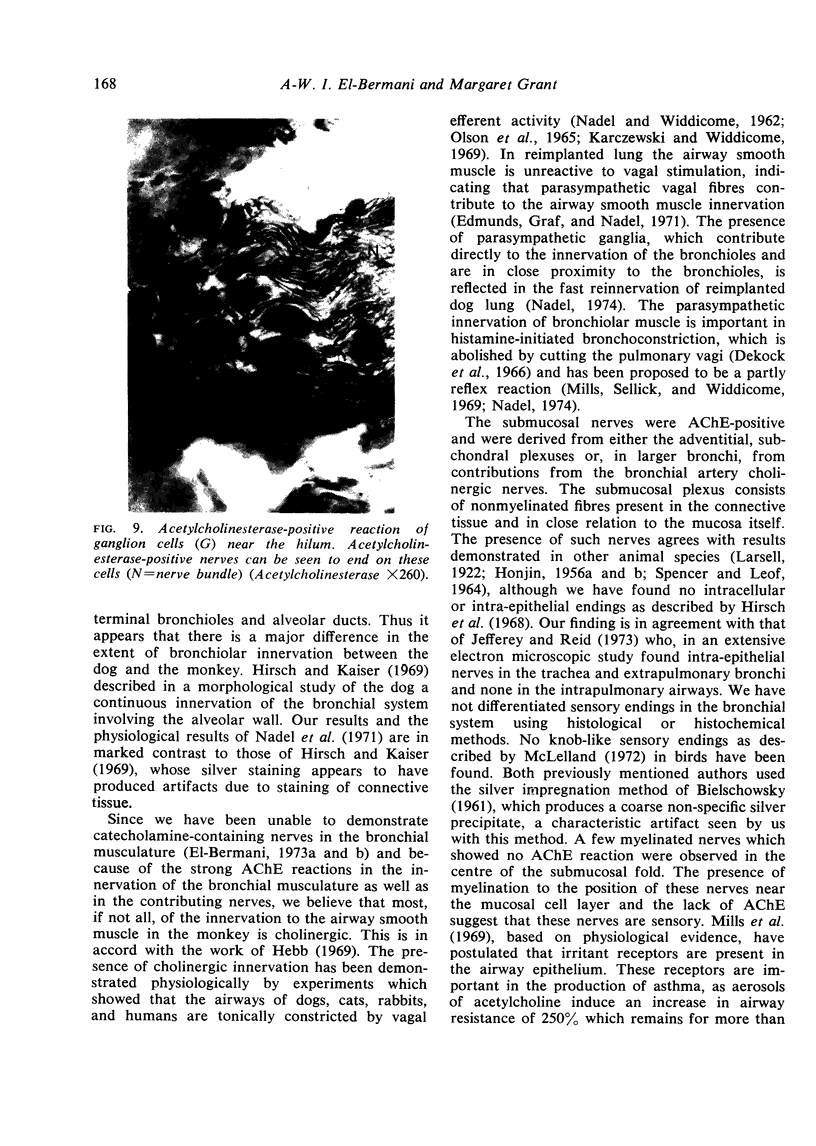
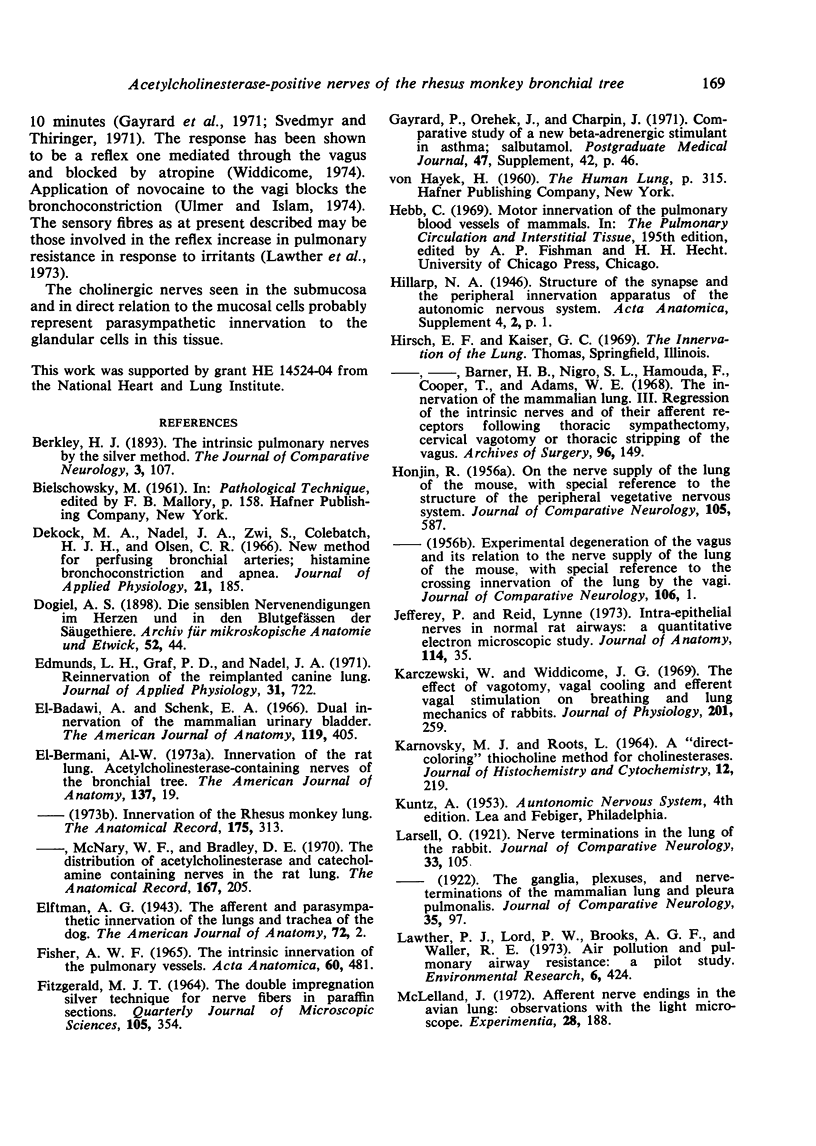
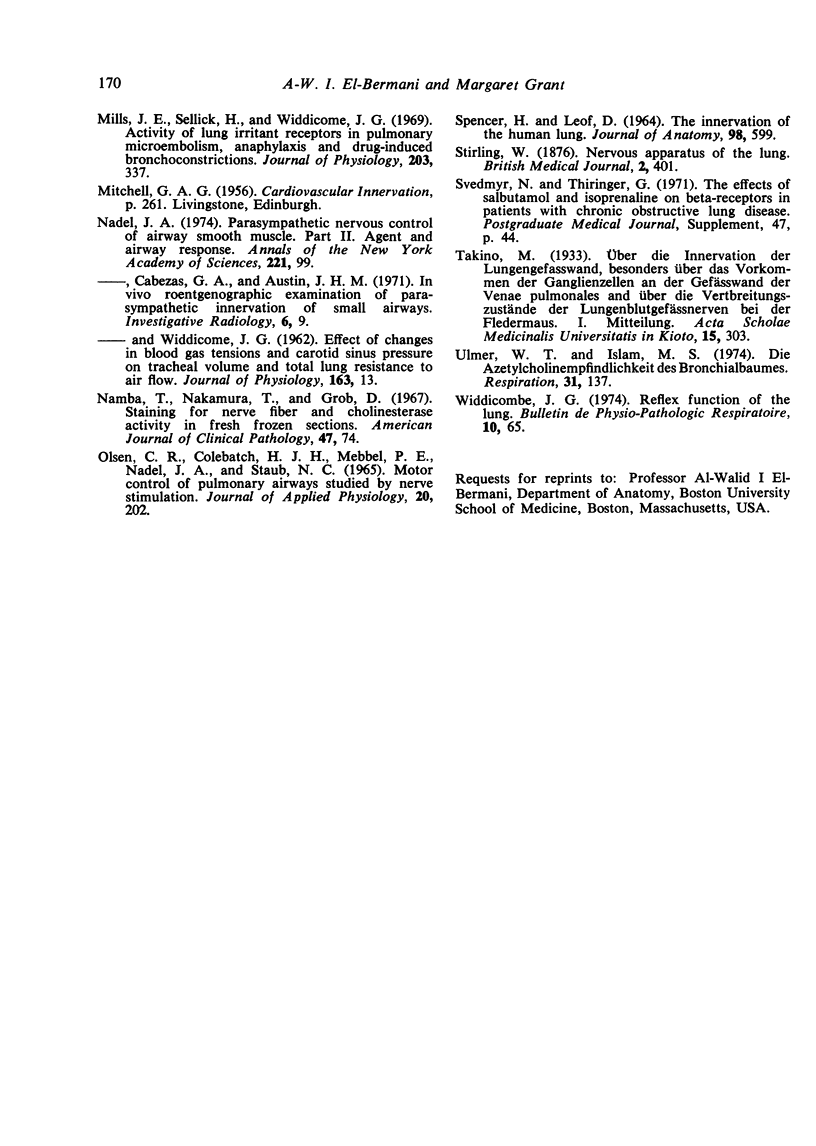
Images in this article
Selected References
These references are in PubMed. This may not be the complete list of references from this article.
- Bradley D. E., McNary W. F., el-Bermani A. W. The distribution of acetylcholinesterase and catecholamine containg nerves in the rat lung. Anat Rec. 1970 Jun;167(2):205–207. doi: 10.1002/ar.1091670208. [DOI] [PubMed] [Google Scholar]
- DeKock M. A., Nadel J. A., Zwi S., Colebatch H. J., Olsen C. R. New method for perfusing bronchial arteries: histamine bronchoconstriction and apnea. J Appl Physiol. 1966 Jan;21(1):185–194. doi: 10.1152/jappl.1966.21.1.185. [DOI] [PubMed] [Google Scholar]
- Edmunds L. H., Jr, Nadel J. A., Graf P. D. Reinnervation of the reimplanted canine lung. J Appl Physiol. 1971 Nov;31(5):722–727. doi: 10.1152/jappl.1971.31.5.722. [DOI] [PubMed] [Google Scholar]
- Fisher A. W. The intrinsic innervation of the pulmonary vessels. Acta Anat (Basel) 1965;60(4):481–496. doi: 10.1159/000142658. [DOI] [PubMed] [Google Scholar]
- HONJIN R. On the nerve supply of the lung of the mouse, with special reference to the structure of the peripheral vegetative nervous system. J Comp Neurol. 1956 Oct;105(3):587–625. doi: 10.1002/cne.901050308. [DOI] [PubMed] [Google Scholar]
- Hirsch E. F., Kaiser G. C., Barner H. B., Nigro S. L., Hamouda F., Cooper T., Adams W. E. The innervation of the mammalian lung. 3. Regression of the intrinsic nerves and of their afferent receptors following thoracic sympathectomy, cervical vagotomy or thoracic stripping of the vagus. Arch Surg. 1968 Jan;96(1):149–155. doi: 10.1001/archsurg.1968.01330190151032. [DOI] [PubMed] [Google Scholar]
- KARNOVSKY M. J., ROOTS L. A "DIRECT-COLORING" THIOCHOLINE METHOD FOR CHOLINESTERASES. J Histochem Cytochem. 1964 Mar;12:219–221. doi: 10.1177/12.3.219. [DOI] [PubMed] [Google Scholar]
- Karczewski W., Widdicombe J. G. The effect of vagotomy, vagal cooling and efferent vagal stimulation on breathing and lung mechanics of rabbits. J Physiol. 1969 Apr;201(2):259–270. doi: 10.1113/jphysiol.1969.sp008754. [DOI] [PMC free article] [PubMed] [Google Scholar]
- Lawther P. J., Lord P. W., Brooks A. G., Waller R. E. Air pollution and pulmonary airway resistance: a pilot study. Environ Res. 1973 Dec;6(4):424–435. doi: 10.1016/0013-9351(73)90057-1. [DOI] [PubMed] [Google Scholar]
- McLelland J. Afferent nerve endings in the avian lung: observations with the light microscope. Experientia. 1972 Feb 15;28(2):188–189. doi: 10.1007/BF01935749. [DOI] [PubMed] [Google Scholar]
- Mills J. E., Sellick H., Widdicombe J. G. Activity of lung irritant receptors in pulmonary microembolism, anaphylaxis and drug-induced bronchoconstrictions. J Physiol. 1969 Aug;203(2):337–357. doi: 10.1113/jphysiol.1969.sp008867. [DOI] [PMC free article] [PubMed] [Google Scholar]
- Nadel J. A., Cabezas G. A., Austin J. H. In vivo roentgenographic examination of parasympathetic innervation of small airways. Use of powdered tantalum and a fine focal spot x-ray tube. Invest Radiol. 1971 Jan-Feb;6(1):9–17. doi: 10.1097/00004424-197101000-00002. [DOI] [PubMed] [Google Scholar]
- Nadel J. A. Parasympathetic nervous control of airway smooth muscle. Ann N Y Acad Sci. 1974;221:99–102. doi: 10.1111/j.1749-6632.1974.tb28204.x. [DOI] [PubMed] [Google Scholar]
- Namba T., Nakamura T., Grob D. Staining for nerve fiber and cholinesterase activity in fresh frozen sections. Am J Clin Pathol. 1967 Jan;47(1):74–77. doi: 10.1093/ajcp/47.1.74. [DOI] [PubMed] [Google Scholar]
- SPENCER H., LEOF D. THE INNERVATION OF THE HUMAN LUNG. J Anat. 1964 Oct;98:599–609. [PMC free article] [PubMed] [Google Scholar]
- Ulmer W. T., Islam M. S. Die Azetylcholinempfindlichkeit des Bronchialbaumes. Respiration. 1974;31(2):137–145. doi: 10.1159/000193105. [DOI] [PubMed] [Google Scholar]
- el-Badawi A., Schenk E. A. Dual innervation of the mammalian urinary bladder. A histochemical study of the distribution of cholinergic and adrenergic nerves. Am J Anat. 1966 Nov;119(3):405–427. doi: 10.1002/aja.1001190305. [DOI] [PubMed] [Google Scholar]



